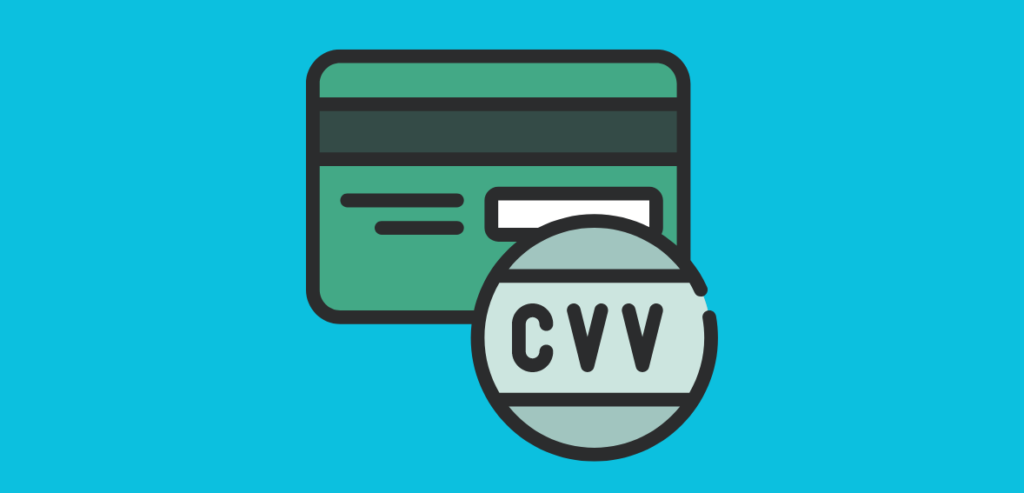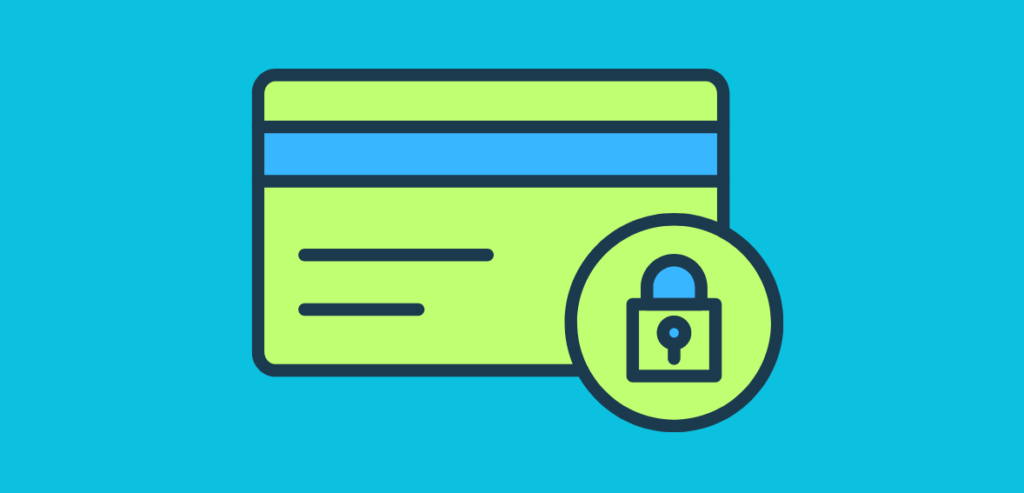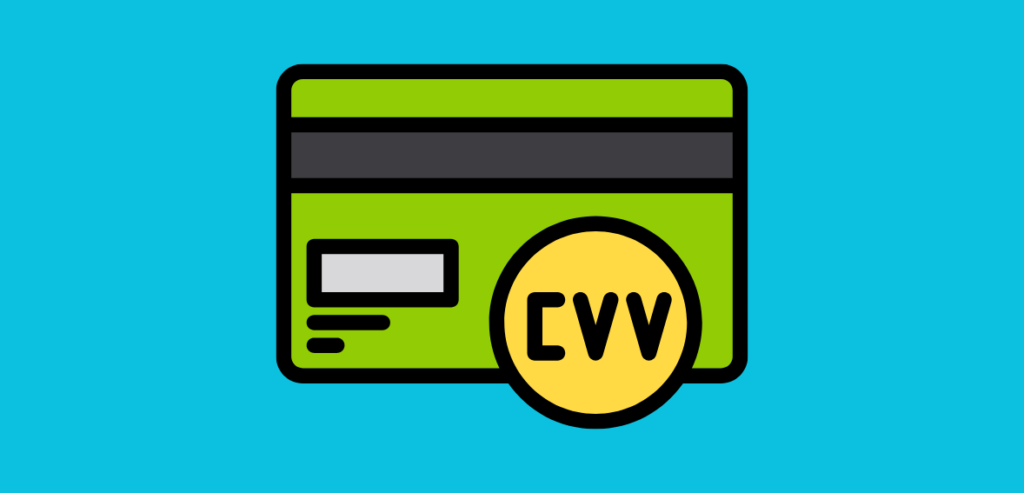CVV stands for Card Verification Value. This unique 3-digit CVV code is necessary to complete every purchase. CVV is a security feature established by credit card companies to help reduce fraud in online transactions. It requires cardholders to enter the CVV2 number at the time of the transaction to confirm that the card is physically present.
But what is a CVV2 code, and why is it essential to have a new generation of CVV codes? How does CVV2 differ from CVV1? And is it possible to forgo requesting this information from your customers? Continue reading to discover more.
What Is a CVV2 Code?
Various payment methods incorporate different levels of security, but virtually all transactions require some form of verification to confirm that the person making the purchase is indeed you.
Security is relatively high for in-person payments using a chip and PIN since you physically possess the card and enter a PIN that only you know to authorize the purchase. Similarly, contactless payments through apps like Apple Pay, Samsung Pay, or Google Pay are secured by unlocking your device.
Online and over-the-phone payments, however, operate differently. Merchants using online payment systems are permitted to store your debit or credit card information, provided you have consented to this. Storing your details on frequently used sites can be convenient, eliminating the need to enter them with every purchase. Yet, this convenience raises the risk of your information being compromised if the site’s server is breached.
The CVV2 number enhances security in these situations.
The Card Verification Value 2 (CVV2) is a three or four-digit security code found on payment cards, usually printed on the back of the card. It adds an extra layer of authentication for transactions where the card is not physically presented, such as over-the-phone purchases or online purchases. Due to PCI compliance and strict data security standards, merchants cannot store CVV2 numbers. Consequently, if your payment details are stolen, they cannot be used for transactions that require a CVV2, thus providing an additional layer of protection.
The CVV2 helps confirm that the individual conducting the transaction is in possession of the actual card. Originally, the CVV was a code embedded in the magnetic stripe of a credit card. The CVV2 was introduced to enhance security for remote transactions, tackling the vulnerabilities associated with online and phone purchases.
A CVV2 is also given for virtual or digital cards, and it can be used for online transactions. When a consumer is accepted for a credit card, some credit card issuers provide a digital CVV2 so they can use the digital version right away, even before the real card comes in the mail.
Where is the CVV2 Security Code Located?

The CVV2 number can be found on either the front or back of your credit or debit card, depending on the card issuer. For Visa, Discover, and MasterCard cards, the CVV2 code is located on the signature panel on the back of the card, immediately following the account number.
For AMEX cards, the four-digit CVV2 code is positioned on the front-right corner of the card, above the card account number.
When you purchase any of the services using a card, the payment terminal or point of sale requires your CVV2 number to process the payment. This is a security measure that helps verify the cardholder’s identity and minimizes the risk of fraud.
How Does the CVV2 Security Code Work?
During transactions, merchants often request the CVV2 code to confirm that you are in possession of the actual payment card. This extra step makes it significantly more difficult for thieves to use stolen debit or credit card information for fraudulent purchases, especially if they lack the CVV2 code. If the provided CVV2 does not match the card’s details, the transaction is likely to be declined.
Whether your card is swiped, inserted, or tapped, the CVV2 code is not communicated automatically during in-person transactions since it is not recorded on the magnetic stripe or EMV chip.
In order to increase the security of these transactions, retailers usually request the CVV2 for purchases made over the phone or online. This measure helps protect you from fraud if your card details are exposed to a data breach.
However, since not all merchants require the CVV2 for purchases, it’s crucial to regularly check your bank and credit card statements and promptly report any suspicious activity to your bank.
The Role of CVV2 in Enhancing Payment Security

CVV2 is crucial in reducing the risk of unauthorized credit card transactions. When hackers infiltrate a merchant’s database, they can potentially access thousands of credit card numbers. However, as mentioned, regulations prevent merchants from storing the CVV2 number along with these card details. Consequently, without the CVV2, the stolen card numbers are less useful as they cannot be used with merchants who require CVV2 verification for transactions.
This limitation has compelled fraudsters to resort to less effective tactics, such as phishing, to obtain credit card details. These methods differ from direct database breaches because they can capture both the card number and the CVV2 by deceiving the cardholder into providing them.
How is CVV2 Different from CVV1?
CVV1 and CVV2 both enhance credit card security but function differently and in different contexts. CVV1 is embedded in a credit card’s magnetic stripe and is used during transactions where the card is physically swiped at a point of sale. This helps prevent the easy replication of credit cards for fraudulent activities.
On the other hand, CVV2 is not encoded on the magnetic stripe but is printed directly on the card. It is primarily utilized for transactions where the card is not physically present, such as online or over-the-phone purchases. In these cases, the cardholder must manually enter the CVV2. Unlike CVV1, CVV2 is not applicable for in-person transactions and cannot be retained by merchants post-transaction, which boosts security for online shopping.
What are the Limitations of the CVV2 Security Code?
While CVV2 offers an added layer of security, it is not foolproof. Determined attackers can still use techniques such as phishing or malware to obtain cardholder information, including CVV2 codes.
- Fraud Involving Family and Friends
Family members and friends may possess the necessary information to conduct unauthorized purchases. In such instances, the cardholder might dispute the transaction without realizing that it technically remains a legitimate transaction because it was authorized by someone they know.
- Lost or Stolen Cards
CVV2 codes help merchants confirm that the individual making a transaction has a credit card in their possession. However, if a card falls into the hands of a fraudster, the CVV2 code, typically visible on the card, can be used alongside other stolen card details to make unauthorized purchases.
- Chargebacks
Simply recording the CVV2 may not prevent a situation where a person intentionally makes a purchase and then files a chargeback to effectively receive the goods or services for free, a practice often referred to as cyber shoplifting.
Cardholders are advised to contest any unfamiliar charges on their statements. Yet, there may be instances where a charge is legitimate, but the cardholder does not recognize the transaction due to how the merchant’s name appears on their statement.
Tips to Protecting Your CVV2 Security Code

Here are some steps to enhance the security of your payment details and prevent credit card fraud:
- Do Not Share Your Card Information
Be cautious of unexpected requests for your card information via email or phone. Refuse these requests, especially if you did not initiate the contact or transaction.
- Stay Alert to Phishing Sites
Phishing sites are designed to mimic legitimate websites to trick you into entering sensitive information. They may even use SSL certificates and display a padlock icon to appear secure. Always verify that you are on the correct website before entering your details.
- Install Antivirus Software
Antivirus software helps detect and remove viruses and other malicious software that might be installed on your computer without your knowledge. Regular scans can protect your data from hackers.
- Secure Your Home WiFi with a Password
Password-protecting your home WiFi prevents unauthorized individuals within a range from accessing and monitoring your personal information sent over the network. Additionally, avoid entering your card details when connected to public WiFi networks.
- Regularly Review Your Account Statements
Monitor your account statements to track your expenditures and quickly identify any unauthorized charges. If you find a charge you do not recognize, contact your bank immediately to report the issue and possibly get a new card issued.
The Future of Card Verification Value: CVV3
The evolution of card security through verification values, specifically with the introduction of CVV3, focuses on enhancing transaction security through dynamic means. Unlike CVV1 and CVV2, which are static numbers printed on the card, CVV3 is generated uniquely for each transaction. This dynamic generation tackles the weaknesses of static CVV numbers that are vulnerable to theft via skimming and data breaches.
CVV3 employs a cryptographic technique where the card chip produces a unique verification code in response to each transaction request, dramatically lowering the risk of fraud. This new system is engineered to work seamlessly with existing card reading technology by simulating the data of traditional magnetic stripes during transactions. However, the effectiveness and widespread adoption of CVV3 depend on significant updates to both card issuer and merchant systems to accommodate these dynamic security features, presenting a combination of technological and logistical challenges.
Conclusion
CVV2 codes play a pivotal role in fortifying the security of online and over-the-phone transactions. By requiring cardholders to input this unique security code, credit card companies add an extra layer of authentication, making it more challenging for fraudsters to misuse stolen card information. Although not impervious to all forms of fraud, CVV2 significantly reduces the risk associated with unauthorized transactions.
However, it’s crucial to remain vigilant against evolving threats, such as phishing scams and malware attacks, which can compromise cardholder information, including CVV2 codes. Looking ahead, the advent of CVV3 promises to further bolster transaction security by introducing dynamic verification codes, marking another step forward in the ongoing battle against financial fraud.
Frequently Asked Questions
What is a CVV2 code, and why is it used?
A CVV2 code is a three- or four-digit security code on cards. It enhances security for online and phone transactions by confirming card possession and helping ensure the rightful cardholder is making the purchase.
Does the CVV2 code change, and what happens if it’s stolen?
The CVV2 code remains constant until card replacement. If compromised, contact your bank to prevent fraud and receive a new card with a new CVV2 code.
Is it safe to provide the CVV2 code during transactions?
Yes, it’s safe in secure environments. Avoid sharing it with untrusted parties or on insecure websites. Use it on PCI-compliant sites for secure transactions.
Are CVV2 codes required for all online purchases?
Not always. Requirements vary by merchant and transaction type. While some may not require it, providing the CVV2 enhances transaction authenticity and reduces fraud risk.

